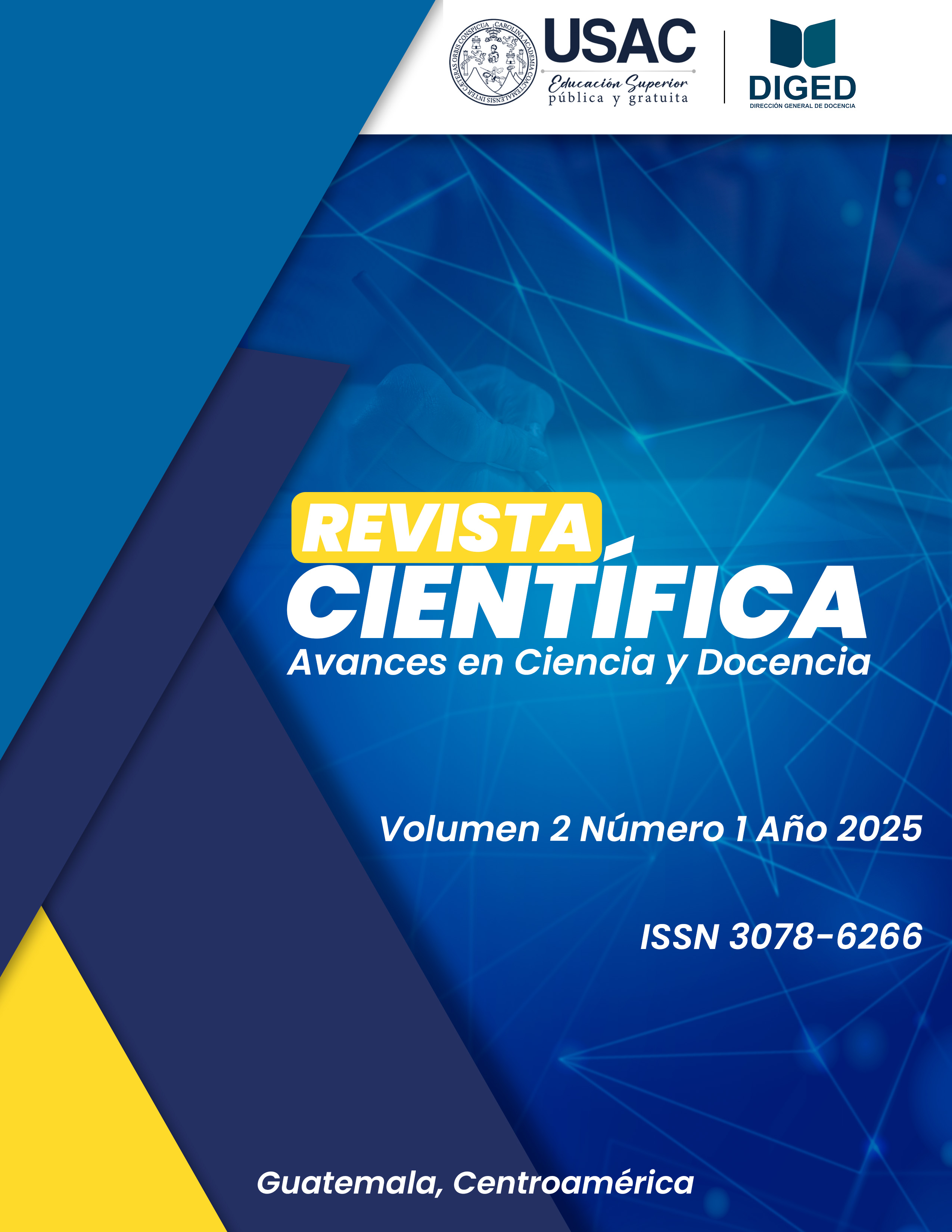Maíz y micotoxinas en la región Ch’ortí’: un desafío para la salud y la soberanía alimentaria
DOI:
https://doi.org/10.70939/revistadiged.v2i1.30Palabras clave:
micotoxinas, aflatoxinas, fumonisinas, maíz, Ch’ortí’Resumen
OBJETIVO: determinar la presencia de micotoxinas en granos de maíz (Zea mays L.) producidos y consumidos por familias campesinas en Jocotán, Camotán y San Juan Ermita, de la región Ch´ortí´ de Chiquimula. MÉTODO: se aplicó un muestreo aleatorio simple y se seleccionaron 96 hogares productores de maíz. En cada uno se recolectaron tres muestras en las etapas de cosecha, almacenamiento y consumo, sumando 288 en total. Las técnicas incluyeron: caminamientos en parcela, muestreo en costales y recolección de maíz cocido. Las muestras fueron analizadas en laboratorio para detectar aflatoxinas, fumonisinas, ocratoxina A y deoxinivalenol. Además, se aplicaron encuestas sobre manejo postcosecha y preparación del maíz. RESULTADOS: el 100 % de las muestras analizadas presentaron al menos una micotoxina. Jocotán mostró niveles medios de aflatoxinas (10.79 ppb) y fumonisinas (5.25 ppm). Camotán reportó menores concentraciones, mientras que San Juan Ermita presentó los valores más altos de fumonisinas (9.88 ppm) y otras toxinas. Se identificó una relación directa entre el almacenamiento inadecuado —como el uso de costales sin secado— y el incremento en los niveles de contaminación por micotoxinas. CONCLUSIÓN: la presencia de micotoxinas en el maíz de consumo en la región Ch’ortí’ representa un riesgo para la salud y la seguridad alimentaria. Los niveles elevados, sobre todo en almacenamiento, evidencian la urgencia de mejorar las prácticas poscosecha y establecer sistemas comunitarios de vigilancia que reduzcan la exposición y fortalezcan la soberanía alimentaria local.
Citas
Anguiano Ruvalcaba, G. L., Vargas Cortina, A. V., y Guzmán de Pena, D. (2005). Inactivación de aflatoxina B1 y aflatoxicol por nixtamalización tradicional del maíz y su regeneración por acidificación de la masa. Salud Pública Méx, 45(5), 369–375. DOI: https://doi.org/10.1590/S0036-36342005000500007
https://www.scielo.org.mx/scielo.php?script=sci_arttext&pid=S0036-36342005000500007
Fuentes López, M. R. (2002). El cultivo de maíz en Guatemala: una guía para su manejo agronómico. ICTA.
https://www.funsepa.net/guatemala/docs/cultivoMaizManejoAgronomico.pdf
Garcia Cela, E., Kiaitsi, E., Sulyok, M., Krska, R., Medina, A., Petit Damico, I., y Magan, N. (2019). Influence of storage environment on maize grain: CO2 production, dry matter losses and aflatoxins contamination. Food Additives & Contaminants: Part A, 36(1), 175–185.
https://doi.org/10.1080/19440049.2018.1556403 DOI: https://doi.org/10.1080/19440049.2018.1556403
Gómez Grijalva, L. A. (2009). Análisis de cinco diferentes micotoxinas en muestras de alimentos terminados para aves de corral, remitidas al laboratorio de ornitopatología y avicultura de la facultad de medicina veterinaria y zootecnia, Universidad de San Carlos de Guatemala. Período de julio de 2007 a junio de 2008 [Tesis licenciatura, USAC].
http://www.repositorio.usac.edu.gt/3372/2/Tesis%20Med%20Vet%20Leonidas%20A%20Gomez%20G.pdf
López Naranjo, L. M. (2013). Principales micotoxicosis asociadas al consumo de maíz y sus subproductos [Tesis de licenciatura, Corporación Universitaria Lasallista]. https://repository.unilasallista.edu.co/server/api/core/bitstreams/d4f52d12-351b-4022-a25d-85e97841a531/content
Martínez Padrón, H. Y., Hernández Delgado, S., Reyes Méndez, C. A., y Vásquez Carrillo, G. (2013). El género Aspergillus y sus micotoxinas en México: problemáticas y perspectivas. Revista Mexicana de Fitopatología, 31(2), 126–146.
https://www.scielo.org.mx/scielo.php?script=sci_arttext&pid=S0185-33092013000200005
Méndez Albores, A. (2009). Aflatoxinas en las tortillas de máiz. Ergomix.
https://www.engormix.com/micotoxinas/aflatoxinas/aflatoxinas-tortillas-maiz_a33027/
Pitt, J. I. (2000). Toxigenic fungi and mycotoxins. British Medical Bulletin, 56(1), 184–192. https://doi.org/10.1258/0007142001902888 DOI: https://doi.org/10.1258/0007142001902888
Romagnoli, M. S. (2009). Las micotoxinas. ¿Qué sabemos sobre esta problemática? 2009, 27.
https://fcagr.unr.edu.ar/Extension/Agromensajes/27/2AM27.htm
Wrather, A., Sweets, L., Bailey, W., Claxton, T., Sexten, J., y Carlson, M. (2010). Aflatoxins in corn. In Extensión University of Missouri.
Descargas
Publicado
Cómo citar
Número
Sección
Licencia
Derechos de autor 2025 Servio Darío Villela Morataya

Esta obra está bajo una licencia internacional Creative Commons Atribución 4.0.
Los autores/as que publiquen en esta revista aceptan las siguientes condiciones:
- Los autores/as conservan los derechos de autor y ceden a la revista el derecho de la primera publicación, con el trabajo registrado con la licencia de atribución de Creative Commons 4.0, que permite a terceros utilizar lo publicado siempre que mencionen la autoría del trabajo y a la primera publicación en esta revista.
- Los autores/as pueden realizar otros acuerdos contractuales independientes y adicionales para la distribución no exclusiva de la versión del artículo publicado en esta revista (p. ej., incluirlo en un repositorio institucional o publicarlo en un libro) siempre que indiquen claramente que el trabajo se publicó por primera vez en esta revista.
- Se permite y recomienda a los autores/as a compartir su trabajo en línea (por ejemplo: en repositorios institucionales o páginas web personales) antes y durante el proceso de envío del manuscrito, ya que puede conducir a intercambios productivos, a una mayor y más rápida citación del trabajo publicado.





